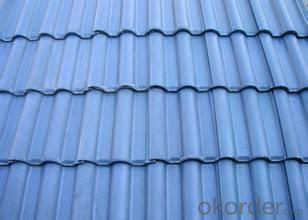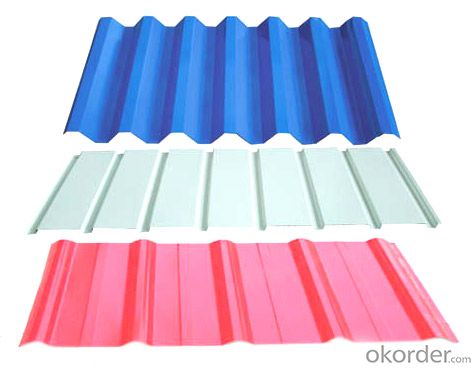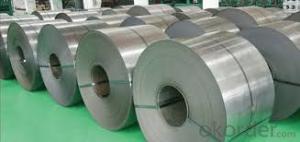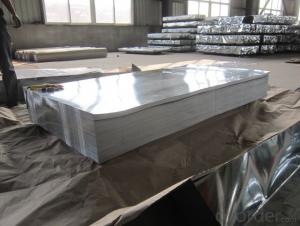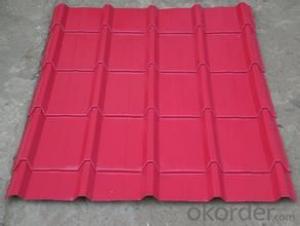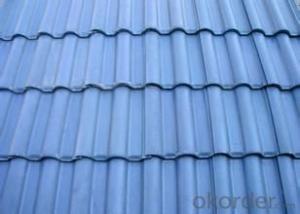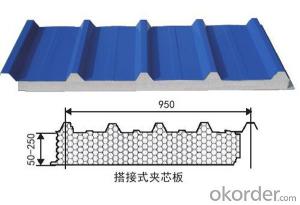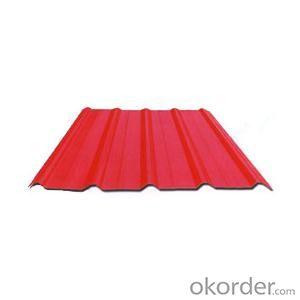AL prepainted roof sheet / colour corrugated prepainted sheet
- Loading Port:
- Shanghai
- Payment Terms:
- TT OR LC
- Min Order Qty:
- 2 m.t.
- Supply Capability:
- 100000 m.t./month
OKorder Service Pledge
OKorder Financial Service
You Might Also Like
Quick Details
| Standard: | AISI,ASTM,DIN,GB,JIS | Grade: | AISI,ASTM,BS,DIN,GB,JIS | Thickness: | 0.17mm-0.6mm |
| Place of Origin: | China (Mainland) | Brand Name: | Model Number: | Corrugated sheet | |
| Type: | Steel Plate | Technique: | Cold Rolled | Surface Treatment: | Coated |
| Application: | Roofing,Ceiling,Roof | Special Use: | High-strength Steel Plate | Width: | 600-1250mm |
| Length: | as per customers request | Zinc coating: | 60-275g/m2 | Surface processing: | Regular spangle,minimal spangle |
Packaging & Delivery
| Packaging Detail: | Standard seaworthy or as your requirement. |
| Delivery Detail: | Within 9 days after confirming the order. |
Specifications
Prepaint corrugated roofing sheet
1.our material are from big mill
2.surface and edge is glossy
3.our package is export pa
Prepainted corrugated steel roofing sheets
Production
Standard | JIS G3302 1998, ASTM A653M/A924M 2004,or according to your request |
Thickness | 0.13mm-1.5mm |
Width | 400mm-1250mm |
Tolerance | Thickness: +/-0.02mm Width:+/-2mm |
Length | We can adjust the length according to your request |
Wave depth | As to requirement |
Zinc Coating | 40g/m2-275g/m2 |
Surface treatment | Color-Coated & Galvanized |
Color | All RAL color |
Coat | 25±5μm on front coating and 7± 2μm on back coating |
Temper | 1.Full hard |
2.Commercial quality | |
3. Dry, chromate, skin passed, tension level, shining. | |
Spangle | Regular spangle, minimized spangle and zero spangle |
Tensile Strength | >300mpa |
Yield Strength | 370-380mpa |
Application | various roofs or walls referring to the large size factory buildings, storages, exhibition halls, gymnasiums etc. |
MOQ | 50Ton |
Specification
Process ability | Yield strength | Tensile strength | Elongation % | 180°cold-bending |
Common PV | - | 270-500 | - | d=0,intact,no zinc removal |
Mechanical interlocking JY | - | 270-500 | - | d=0,intact,no zinc removal |
Structure JG | >=240 | >=370 | >=18 | d=0,intact,no zinc removal |
Deep drawn SC | - | 270-380 | >=30 | |
EDDQ SC | - | 270-380 | >=30 | d=0,intact,no zinc removal |
- Q: Can the steel sheets be used for decorative purposes?
- Certainly, decorative purposes can be fulfilled by steel sheets. Customization and shaping of steel sheets into an array of designs, patterns, and sizes enable their suitability for diverse decorative applications. They are ideal for crafting distinctive and contemporary architectural elements like ornamental facades, decorative wall panels, or intricate metal screens. Moreover, steel sheets find utility in decorative furniture, art installations, and sculptures. Their popularity stems from their versatility, durability, and sleek appearance, which effortlessly infuse spaces with elegance and sophistication, both indoors and outdoors.
- Q: What is the average wind load capacity of steel sheets?
- The average wind load capacity of steel sheets can vary depending on various factors such as the thickness of the sheet, the type of steel used, and the specific design and installation of the structure. However, steel sheets are known for their high strength and durability, making them capable of withstanding significant wind loads. Typically, steel sheets used for roofing or cladding applications are designed to meet specific wind load requirements based on regional building codes and standards. These standards take into account factors such as the geographical location, building height, exposure category, and wind speed. To determine the wind load capacity of steel sheets, engineers and architects use calculations and simulations to analyze the forces exerted by the wind on the structure. They consider factors such as wind pressure, building orientation, surface area, and the shape and profile of the steel sheets. In summary, the average wind load capacity of steel sheets cannot be generalized as it varies based on several factors. It is crucial to consult with a structural engineer or building professional to determine the appropriate wind load capacity requirements for a specific steel sheet application.
- Q: Are steel sheets susceptible to rusting?
- Steel sheets can indeed be prone to rusting. The composition of steel mainly consists of iron, a metal that has a natural tendency to react with oxygen when in contact with moisture, resulting in the formation of iron oxide, commonly referred to as rust. Consequently, when steel sheets come into contact with water or moisture, rusting can occur gradually. Nevertheless, there exist techniques to hinder or decelerate the rusting process, including the application of protective coatings or the utilization of stainless steel. The latter contains elements like chromium that offer supplementary protection against corrosion.
- Q: What are the different coating options for steel sheets (powder coating, paint, etc.)?
- Some of the different coating options for steel sheets include powder coating, paint, galvanized coating, and metal plating.
- Q: What is the average cost of stainless steel sheets?
- The average cost of stainless steel sheets can vary depending on factors such as size, thickness, grade, and market conditions. However, as of 2021, the average cost ranges from $30 to $150 per square foot.
- Q: What are the different thickness options for steel sheets?
- The thickness options for steel sheets can vary depending on the specific type and application, but common options range from very thin sheets around 0.4 mm (0.0157 inches) to thick sheets up to 25 mm (0.9843 inches) or even thicker for certain industrial uses.
- Q: What is galvanized steel sheet?
- Galvanized steel sheet refers to a type of steel that has been coated with a protective layer of zinc to prevent corrosion. The process of galvanization involves immersing the steel sheet in a bath of molten zinc, which forms a metallurgical bond with the surface of the steel. This creates a durable and long-lasting material that is resistant to rust and other forms of corrosion. The zinc coating acts as a sacrificial barrier, meaning that it will corrode before the steel underneath does. This makes galvanized steel sheet an excellent choice for outdoor applications or environments with high humidity or exposure to moisture. It is commonly used in construction, automotive manufacturing, and the production of household appliances. Galvanized steel sheets have a characteristic silver-gray appearance due to the zinc coating. They offer excellent strength and durability, making them suitable for various structural applications. Additionally, galvanized steel sheets are relatively low maintenance and require minimal upkeep to maintain their corrosion resistance. In summary, galvanized steel sheet is a type of steel that has been coated with a layer of zinc to protect it from corrosion. This coating provides excellent durability and resistance to rust, making it a popular choice in various industries.
- Q: Can steel sheets be used for elevator doors?
- Yes, steel sheets can be used for elevator doors. Steel is a commonly used material for elevator doors due to its strength, durability, and fire-resistant properties.
- Q: Is color steel plate the same as color steel tile?
- Color steel plate color steel plate refers to color coated steel plate, color coated steel plate is a kind of organic coated steel plate.Color steel plate coating is cold-rolled steel sheet, galvanized steel sheet, after surface chemical treatment, coating (roll coating) or composite organic film (PVC film, etc.), and then baked, cured and made of products.
- Q: Are steel sheets suitable for furniture manufacturing?
- Yes, steel sheets are suitable for furniture manufacturing. They are durable, strong, and can be easily shaped into various designs. Steel sheets offer stability and longevity to furniture pieces, making them a popular choice for modern and industrial-style furniture.
Send your message to us
AL prepainted roof sheet / colour corrugated prepainted sheet
- Loading Port:
- Shanghai
- Payment Terms:
- TT OR LC
- Min Order Qty:
- 2 m.t.
- Supply Capability:
- 100000 m.t./month
OKorder Service Pledge
OKorder Financial Service
Similar products
Hot products
Hot Searches
Related keywords



